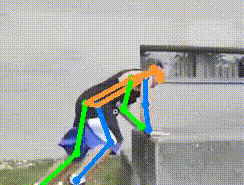Human Pose as Compositional Tokens
Human pose is typically represented by a coordinate vector of body joints or their heatmap embeddings. While easy for data processing, unrealistic pose estimates are admitted due to the lack of dependency modeling between the body joints. In this paper, we present a structured representation, named Pose as Compositional Tokens (PCT), to explore the joint dependency. It represents a pose by M discrete tokens with each characterizing a sub-structure with several interdependent joints. The compositional design enables it to achieve a small reconstruction error at a low cost. Then we cast pose estimation as a classification task. In particular, we learn a classifier to predict the categories of the M tokens from an image. A pre-learned decoder network is used to recover the pose from the tokens without further post-processing. We show that it achieves better or comparable pose estimation results as the existing methods in general scenarios, yet continues to work well when occlusion occurs, which is ubiquitous in practice. The code and models are publicly available at https://github.com/Gengzigang/PCT.
PDF Abstract CVPR 2023 PDF CVPR 2023 Abstract




 MS COCO
MS COCO
 Human3.6M
Human3.6M
 MPII
MPII
 MPII Human Pose
MPII Human Pose
 CrowdPose
CrowdPose
 OCHuman
OCHuman
